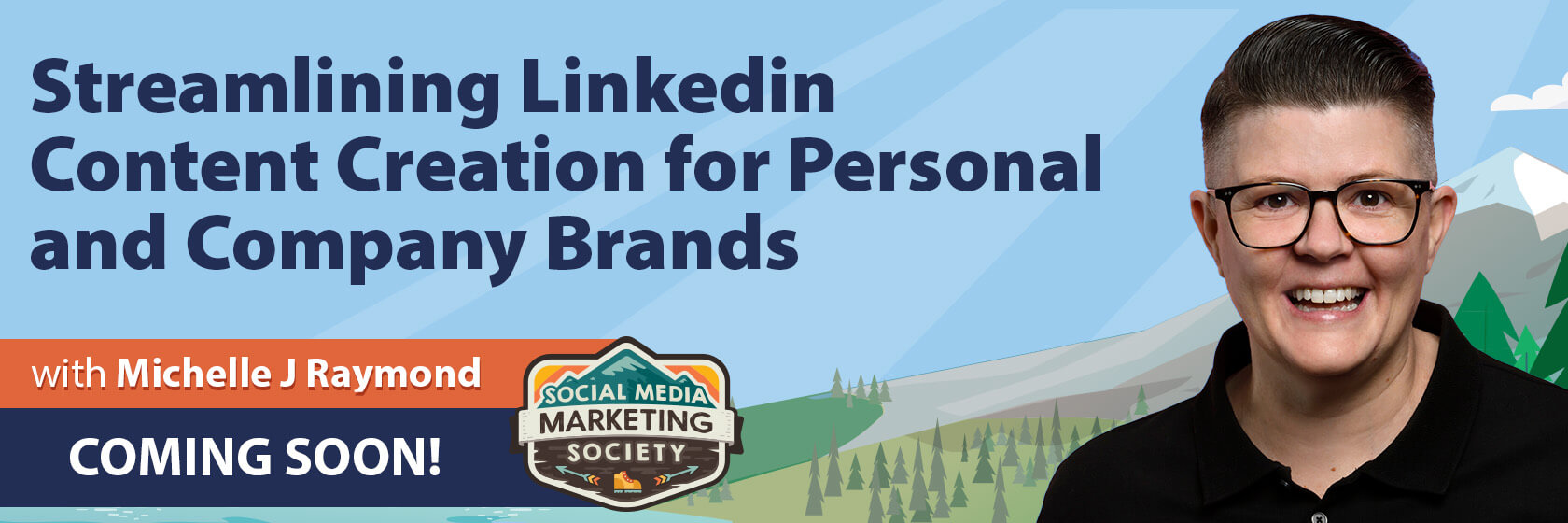Today's Guide to the Marketing Jungle from Social Media Examiner... | Presented by |  |
It's National 📽️ 🎶 Film Score Day, Alluser... What would your favorite movie be without its score?
In today's edition:
-
Today's 👉 Tip of the Day is for video
-
🤩 A guide to company-wide marketing
-
Apple 🎙️ podcast placement
-
New Meta ads 🎯 audience
-
🤖 X's AI model

Want to produce better video with your smartphone? Are you looking for a quick tip you can implement right now?
If you're already shooting in 4K, adjusting your speed setting to match your desired output can improve your end result.
Adjust Your Frames Per Second
Shoot video at 24 or 30 frames per second for regular talking head videos.
If you plan to slow the footage down when editing, shoot your video at 60 frames per second. This higher frame rate allows for smoother slow motion.
Today's tip is inspired by Steve Wright, a featured presenter in the Social Media Marketing Society.

Struggling to Produce High-Quality Content on LinkedIn?
Consistently keeping up with a content calendar can be challenging. But what if there was another option?
Learn practical strategies for using LinkedIn Live to engage with your audience from LinkedIn Pages expert Michelle J Raymond. Discover how to create one live video that can be easily adapted into a variety of content types, helping you fill your content calendar much more efficiently.
This training is only available to members of the Social Media Marketing Society. Join today, and you'll get access to over 100 training sessions—including this one on April 9.
I'm ready to make my content creation easier.

How to Help Everyone in Your Business Market Your Product or Service
Want more customers? Wondering how to empower anyone on your staff, not just the marketing team, to respond to and nurture prospective customers?
Follow these steps to create a sales playbook that puts your entire company on the same page so they can help grow business.
Align Internal Stakeholders
The first critical step is to bring together key stakeholders such as sales, marketing, service delivery, and executive leadership for a workshop. The primary goals of this session are to:
-
Get everyone aligned on your ideal target audience. Who can you serve better than anyone else? Narrow down firmographic criteria like industry, company size, and location, as well as psychographic and behavioral attributes.
-
Agree on the core business goals and objectives your sales playbook will support. What are the quantitative and qualitative outcomes you want to achieve in the market?
-
Surface areas of market misalignment and open questions that require further research and validation.
Gather External Buyer Insights
Armed with initial hypotheses about your ideal audience and value proposition from the internal workshop, the next step is to test those assumptions with real buyer insights. There are two key types of buyers to engage through interviews, whose feedback is invaluable:
-
Current and past customers who know and love your business. Seek to understand why they chose you, what specific outcomes they achieved through the partnership, and how they view your unique strengths.
-
Prospects you lost to competitors or no decision. Uncover why they didn't select your business, what they were looking for that you didn't provide, and what they ultimately bought instead. If you can't get direct interviews, reviewing loss reports from the sales team can provide useful data points.
In addition to interviews, analyze quantitative data from your CRM and marketing automation systems to identify commonalities in your most successful customer accounts and leads that didn't convert.
This external research aims to validate or refine your target audience hypotheses, surface new pain points and objectives, and collect proof points demonstrating your unique value. Look for patterns and language you can incorporate directly into the playbook.
Assess the Competitive Landscape
Now, analyze how your top competitors are positioning themselves in the market. Review their websites, content marketing assets, and any publicly available case studies. Talk to your sales team about which competitors come up most often and how they succeed.
The goal is to understand the general narrative in the market so you can differentiate your approach through how you package and communicate your positioning, the unique perspective you bring, and the vertical or use case specialization you highlight.
Capture the key themes, proof points, and language competitors use so you can thoughtfully choose where to align and where to stand apart in your own messaging.
Prioritize and Build Consensus
By this point, you should have a robust fact base from internal and external sources to guide decisions about your sales playbook strategy. It's time to narrow that down to the most essential elements through a structured prioritization exercise.
Bring the internal stakeholder group back together to review what you've learned and test the initial target audience and positioning hypotheses. Facilitate an objective discussion of the pros and cons of different opportunity areas and push the group to prioritize the most compelling two or three to execute first. For each area, build the business case for why it warrants investment and the specific use cases you'll focus the playbook on supporting.
Socializing these recommendations across the organization and building consensus is key to a successful rollout. Develop a crisp presentation highlighting the market feedback, data, and rationale behind each recommendation. Meet with your internal stakeholders and influential voices individually to get their input and buy-in, then roll your playbook out to everyone in your business.
Today's advice is provided with insights from Samantha Stone.

🗞 Apple Podcast Rank: According to a recent Semafor report, Apple has been actively encouraging independent podcast creators to join its Apple Podcasts Subscriptions program, launched in 2021. While some executives have stated that the subscription service is not a significant source of revenue, they believe it is worth participating to secure a prominent placement in the Apple Podcasts app's top carousel. The company's podcast team handpicks shows for the top slots, including some that are not part of the revenue-sharing program. However, an Apple insider revealed that the company designed the app to offer more features and benefits, such as reserved slots in the top carousel, to shows that opt into the subscription service. Source: Semafor
🗞 Meta's Engaged Customers Audience Segment: The feature is found within Advantage+ Shopping Campaigns and enables users to target people who have shown an interest in their products or services but have not yet made a purchase. Source: JonLoomer.com
🗞 X/Twitter's Grok 1.5: Grok now has improved reasoning capabilities and a context length of 128,000 tokens. This latest model will be available to early testers and existing Grok users on the X platform in the coming days. Source: X
Did You Know?
Cashews come from a fruit! The nuts we eat are the seeds of the cashew apple.

id: 2024-04-03-12:36:51:158t
Michael Stelzner, Founder and CEO
P.S. Add
michael@socialmediaexaminer.com into your contacts list. Use Gmail?
Go here to add us as a contact.
We publish updates with links for our new posts and content from partners. Your information: Email:
tukangpostoemel@gmail.com Opted in on: 2021-09-06 17:20:47 UTC.







